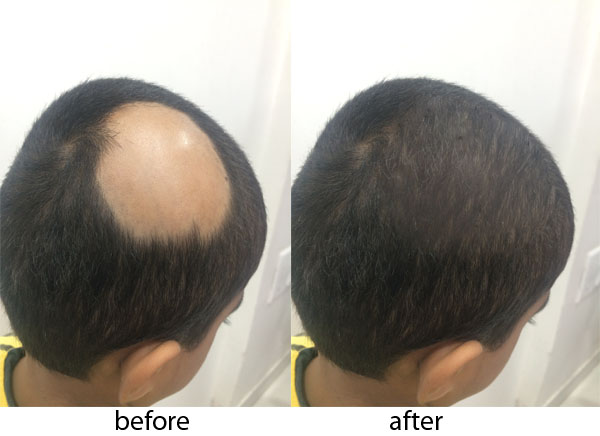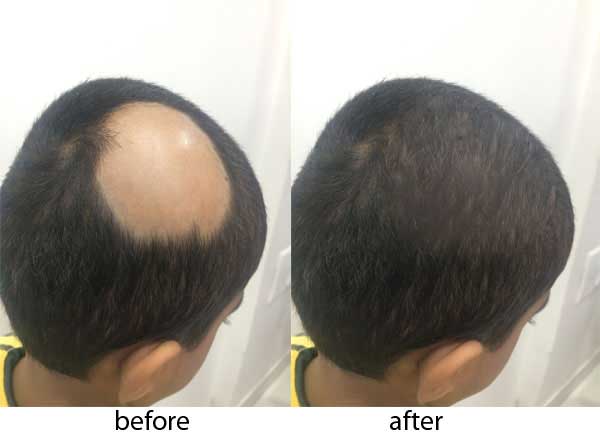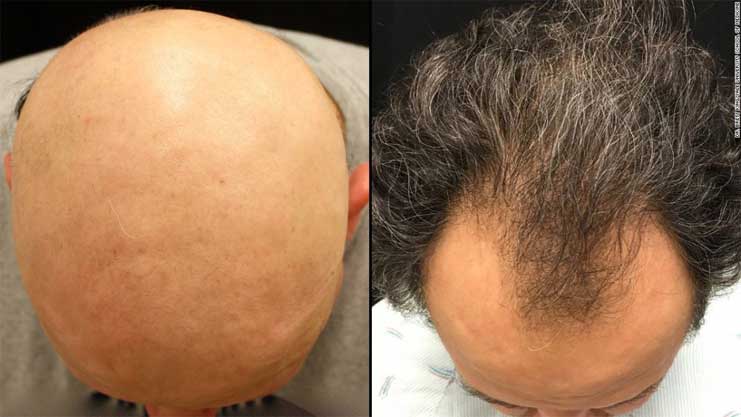What is alopecia areata?
Alopecia areata is an acquired skin disease that can affect all hair-bearing skin and is characterized by localized areas of non-scarring hair loss. Hair baldness treatment is occasionally associated with any other external or internal medical problems. Most often these bald areas regrow their hair spontaneously.
Alopecia areata is rare before the age of 3 years. There seems to be a significant to inherit the tendency to develop alopecia areata from ancestors.
What Are the Symptoms of Alopecia Areata?
The main symptom of alopecia areata is hair loss. Hair usually falls out in small round patches on the scalp. These patches are usually several centimeters or less. Hair loss might also occur on other parts of the body. You may first notice clumps of hair on your pillow or in the shower. However, other types of diseases can also cause hair to fall out in a similar pattern. Hair loss alone shouldn’t be used to diagnose alopecia treated.
In rare cases, some people may experience more extensive hair loss. This is usually an
indication of another type of alopecia, such as:
- alopecia totalis, which is the loss of all hair on the scalp
- alopecia universalis, which is the loss of all hair on the entire body
The hair loss associated with alopecia areata is unpredictable and random. The hair may grow back at any time and then may fall out again. The extent of hair loss and regrowth varies greatly from person-to-person.
What causes alopecia areata?
Current evidence suggests that alopecia areata is caused by an abnormality in the immune system. This particular abnormality leads to autoimmunity, a misguided immune system that tends to attack its own body. As a result, the immune system attacks particular tissues of the body. In alopecia areata, for unknown reasons, the body’s own immune system attacks the hair follicles and disrupts normal hair formation. Biopsies of affected skin show immune lymphocytes penetrating into the hair bulb of the hair follicles. Alopecia areata is occasionally associated with other autoimmune conditions such as thyroid disease, vitiligo, lupus, rheumatoid arthritis, and ulcerative colitis. The diagnosis or treatment of these diseases is unlikely to affect the course of alopecia areata. Sometimes, alopecia areata occurs within family members, suggesting a role of genes.
How is alopecia areata diagnosed?
The characteristic finding of alopecia treated is a well-circumscribed area or areas of hairless skin in normally hair-bearing areas. Occasionally, it may be necessary to biopsy the scalp to confirm the diagnosis. Other findings that may be helpful are the appearance of short hairs that presumably represent fractured hairs, yellow areas of skin deposition at the follicular orifice, short thin hairs, and grey hair present in a bald area. Other causes of hair loss are generally excluded from the consideration by history and clinical evaluation.
How is Alopecia treated at Skin & Surgery International?
The diagnosis of Alopecia depends majorly on clinical examination and hence Alopecia treatment is started immediately after clinical examination. If needed, the doctor may conduct Trichoanalysis. Since the disorder is fast spreading it needs to be intervened as early as possible.
We do not believe in using steroids locally or internally but our focus is to correct the problems in the immune system. Changes in diet along with external and internal regimen can be suggested along with some home care program.
How to Cope with Hair Baldness treatment?
Alopecia areata can be emotionally challenging, especially when hair loss affects the whole scalp. People with the condition may feel isolated or become depressed. If you’re feeling overwhelmed, counselors or support groups may help you cope with the effects of the disease. Support groups can provide a safe environment for you to share your experience and express any stress or anxiety you may be feeling. The National Alopecia Areata Foundation (NAAF) has support groups that meet in various places across the United States. The NAAF also has conferences and online message boards to help people connect with others who have the disease.
If the hair loss is bothersome, you can try to cover up hair baldness treatment patches with a wig, hat, or stylish scarf. You may also apply a hair-colored powder or cream to the scalp to make the hair loss less obvious. Applying eyebrow pencil can help mask missing eyebrows.






